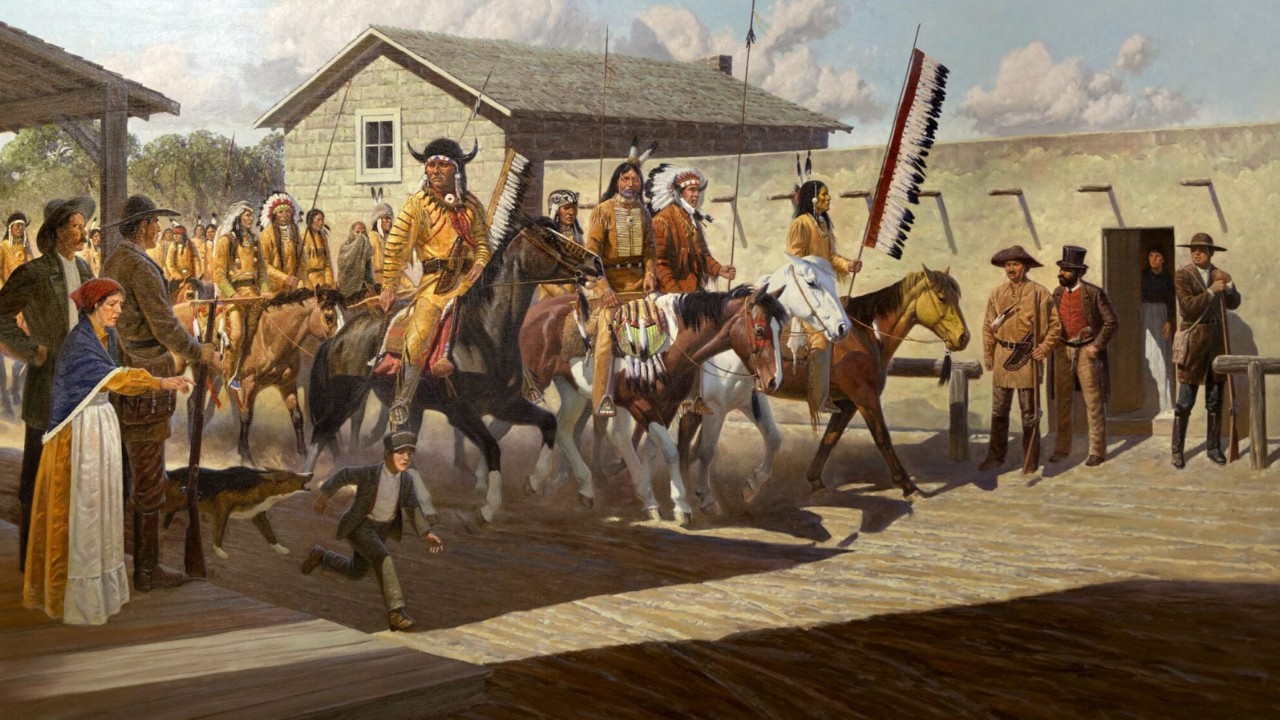Hidden Outposts Of The Comanche Wars

Ever wondered where the hidden outposts of the Comanche Wars lie? These secret spots hold stories of bravery, strategy, and survival. The Comanche, known for their fierce fighting skills, used these outposts to defend their land and people. From the plains of Texas to the hills of Oklahoma, these locations played a crucial role in the battles that shaped history. Visiting these sites offers a glimpse into the past, where you can almost hear the echoes of warriors and settlers. Ready to step back in time and uncover the secrets of the Comanche Wars? Let's dive into these hidden outposts and their incredible tales.
Hidden Outposts of the Comanche Wars
The Comanche Wars were a series of conflicts between the Comanche people and various groups, including Spanish, Mexican, and American settlers. These battles took place across the vast plains of the American Southwest. Many outposts played crucial roles during these wars, often hidden in remote locations. Let's uncover some of these hidden outposts that shaped history.
1. Fort Parker
Fort Parker, located in present-day Texas, was built by Anglo settlers in the 1830s. This fort became infamous for the 1836 raid where Comanche warriors captured Cynthia Ann Parker. Her story became a symbol of the complex relationships between settlers and Native Americans.
2. Adobe Walls
Adobe Walls, situated in the Texas Panhandle, saw two significant battles. The first in 1864 involved Kit Carson leading U.S. troops against Comanche and Kiowa forces. The second, in 1874, featured buffalo hunters defending against a large Comanche-led force. Both battles highlighted the fierce resistance of the Comanche people.
3. Fort Sill
Fort Sill, established in 1869 in present-day Oklahoma, served as a key military outpost during the Indian Wars. It became a central location for U.S. Army operations against the Comanche. Today, it stands as a historic site, preserving the legacy of these conflicts.
4. Palo Duro Canyon
Palo Duro Canyon, often called the "Grand Canyon of Texas," was a strategic hideout for the Comanche. The Battle of Palo Duro Canyon in 1874 marked a turning point in the Red River War. U.S. forces destroyed Comanche villages and supplies, leading to their eventual surrender.
5. Fort Concho
Fort Concho, located in San Angelo, Texas, was established in 1867. It played a vital role in protecting settlers from Comanche raids. The fort's well-preserved buildings offer a glimpse into the military life during the Indian Wars.
6. Fort Griffin
Fort Griffin, perched on a hill overlooking the Clear Fork of the Brazos River in Texas, was a bustling frontier outpost. Established in 1867, it served as a base for military campaigns against the Comanche. The fort's ruins and nearby town of Albany provide a window into the past.
7. Fort Richardson
Fort Richardson, located in Jacksboro, Texas, was built in 1867. It became a key outpost during the Indian Wars, with troops stationed there to protect settlers and conduct campaigns against the Comanche. The fort's restored buildings and museum offer a rich historical experience.
8. Fort Chadbourne
Fort Chadbourne, established in 1852 in West Texas, was an important military post during the Comanche Wars. It served as a supply depot and staging area for troops. The fort's ruins and museum showcase the challenges faced by soldiers on the frontier.
9. Fort Belknap
Fort Belknap, located near Newcastle, Texas, was built in 1851. It played a significant role in the defense against Comanche raids. The fort's reconstructed buildings and exhibits provide insight into the lives of soldiers and settlers during this turbulent period.
10. Fort Phantom Hill
Fort Phantom Hill, situated near Abilene, Texas, was established in 1851. Despite its short operational period, it was a crucial outpost during the Comanche Wars. The fort's stone ruins and scenic surroundings make it a fascinating historical site to visit.
Discovering History's Hidden Corners
Exploring the hidden outposts of the Comanche Wars offers a unique glimpse into a turbulent period of American history. These sites, often overlooked, hold stories of bravery, conflict, and survival. Visiting places like Adobe Walls or Palo Duro Canyon brings history to life, allowing us to walk where warriors and settlers once stood. Each location provides a tangible connection to the past, making history feel real and immediate. Whether you're a history buff or just curious, these outposts are worth the trip. They remind us of the complex and often harsh realities faced by those who lived through the Comanche Wars. So pack your bags, hit the road, and uncover these hidden historical gems. You'll gain a deeper appreciation for the resilience and spirit of those who shaped the American frontier.

